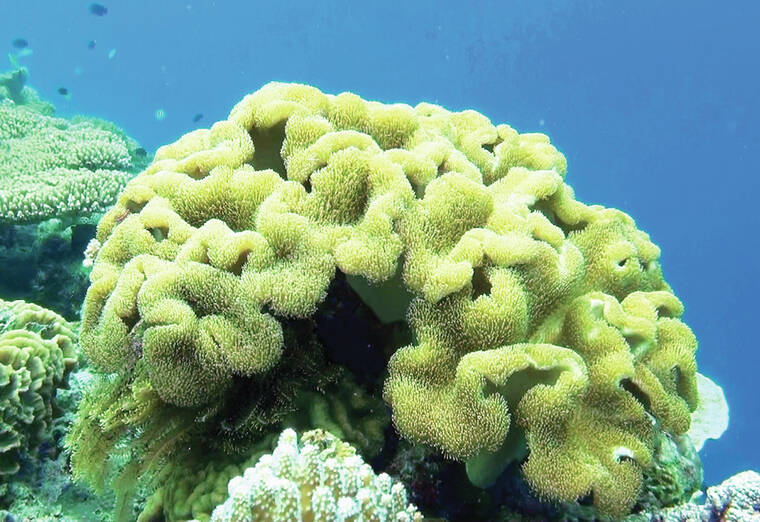In 2015, here in Hawai‘i, we had a coral bleaching event that killed a lot of our shallow water corals, especially in Maui and Hawai‘i Island. But also on Molokai, Lana‘i, Ni‘ihau, Kaua‘i and parts of O‘ahu, the corals remained healthy. This odd pattern of coral deaths in Hawai‘i was unusual and I set out to try and find the reason we lost so much coral, but only in certain locations.
In 2015, here in Hawai‘i, we had a coral bleaching event that killed a lot of our shallow water corals, especially in Maui and Hawai‘i Island. But also on Molokai, Lana‘i, Ni‘ihau, Kaua‘i and parts of O‘ahu, the corals remained healthy. This odd pattern of coral deaths in Hawai‘i was unusual and I set out to try and find the reason we lost so much coral, but only in certain locations.
In the media, at the time there, were many articles blaming the coral deaths on a 2 degree rise in sea temperature. So I traveled to all of the main Hawaiian Islands to do extensive dive studies. What I found was quite interesting. The coral deaths were not directly related to the areas of the warmest water temperatures. Super warm sea water areas of Molokai and Lana‘i had good coral growth, not deaths.
Worldwide, there were many articles claiming that corals all around the planet were dying from a 2 degree rise in sea temperatures, including the famous Australian Great Barrier reef! This was alarming, so in 2015 to 2019 I traveled all around The Coral Triangle, which includes the Philippines, Indonesia, Malaysia and all the way down to Northern Australia.
This area had some of the hottest sea water temperatures on Earth, but we found very little dying coral. In some places, like Wakatobi Indonesia, the sea water temperatures changed over 10 degrees a day with the change in tide.
A simple 2 degree sea temperature change did not kill the corals. The Coral Triangle is the most diverse reef system on earth and contains more than 75 percent of the reef building corals and it was not dying like the Great Barrier Reef, but both areas were suffering a major sea temperature rise.
So if some coral reefs are dying quickly and some are not, but they all are going through a sea temperature change, then there must be something else killing the corals. Just simple logic. We know that when chemicals like raw sewage, farm chemicals and fertilizers run off onto a once healthy coral reef, the corals may die and these toxic chemicals are more reactive when the sea temperature goes up.
There is a lot of new scientific information coming out showing that a healthy coral reef can withstand a quick sea temperature rise, but if that corals become stressed due to other factors like pollution, farm chemicals, leaking cesspools, military discharge of electricity into the coral reef and other factors, the once healthy reef may die when the sea temperatures rise.
What all of this research shows us is coral reefs are very complex and it more than likely takes several stresses at the same time out on the reef to kill the corals, not just a simple 2 degree rise in sea temperatures. One good example of this is on O‘ahu’s westside, where there is a power plant that discharges hot water out onto the reef about 100 yards offshore and around the hot water vent are some huge healthy corals and a lot of fish. The best coral growth on the entire reef there is in the hot water.
I am currently producing a documentary movie showing corals worldwide from 2014 to 2022 and tracking the coral deaths versus the healthy, growing coral reefs so maybe we can figure out what is truly killing some of the coral reefs on earth and not just blaming it all on a 2 degree rise in sea temperatures. The movie will be available soon on my YouTube at Underwater2web.
•••
Terry Lilley is a marine biologist living in Hanalei Kaua‘i and co-founder of Reef Guardians Hawai‘i, a nonprofit on a mission to provide education and resources to protect the coral reef. To donate to Reef Guardians Hawaii go to www.reefguardianshawaii.org.


